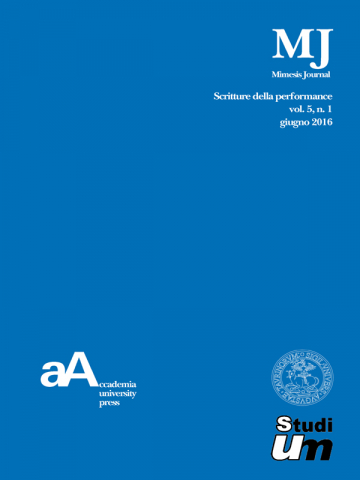Corpi im-memori
L’utopia dello spettatore partecipante
DOI:
https://doi.org/10.4000/mimesis.1106Abstract
This essay retraces and investigates some significant moments in Italia contemporary theatre, as first step toward a “History of the spectator’s memory”. If we apply André Bazin’s theories beyond cinema, we can indeed observe that certaint theatre productions are ruled by a representation of time as a continuous flow, a sort of “imagination in becoming” re-enacting words, objects and sounds from other works: devices to activate memory and the actor-spectator relationship during the mysterious progress of artistic creation. In such a process, the encounter between the performer and the house is crucial, and some artists try to re-define, throught a transformation and re-generation of the habitus (Bordieu), the very relationship between the individual and the community. So, their performances do not offer themselves as an organic, prearranged unit; instead, each one of them is a «signifiant poliphony» (B. Dort) Thus, the engagé spectator is he/she who constantly questions them, in a “bartering” of ideas, meanings, and symbols: indissolubly united by that co-responsibility, actor/author and spectator/co-author speak and act in the “performance space” as a choir of voices, an ensemble of bodies. But which traces are left in the spectators by such experiences? And which responsibility the artist has towards the spectators and their memory?


